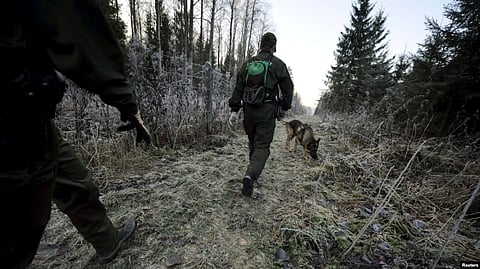Moscow has threatened what it calls a "military-technical response" if Finland joins the alliance. There are fears the border could become a flashpoint.
"Could Russia then try to take a playbook of, say, Georgia, and try to create some kind of frozen conflict, invade a small part of Finland with the very few forces it has left? Certainly, it could try, but Finland has prepared for this militarily," Charly Salonius-Pasternak of the Finnish Institute of International Affairs told VOA.
For now, there is no visible military presence on the Finnish side, and little to indicate the emergence of any new Cold War Iron Curtain.
Impact unknown
Finnish border guard Captain Jussi Pekkala oversees operations at the Vaalimaa crossing point. "We don't know what will happen and how the situation will change between our countries. But at this time the situation is calm, and border traffic is flowing smoothly," he told VOA on a recent visit to the frontier.
When Russia launched its invasion of Ukraine, Pekkala said, there was a brief increase in crossings. "We had a lot of persons fleeing from Russia. Of course, Europeans, Americans. We had like 52 nationalities coming."
Now cross-border traffic is running at just 10% of normal levels. Russia's Sputnik coronavirus vaccine is not approved by the European Union, so most Russians have not been able to enter the bloc for the past two years.
Europe has not introduced travel restrictions on Russian visitors since the Ukraine invasion — but Finland's bid to join NATO could choke off the remaining trickle of visitors as tensions increase.


